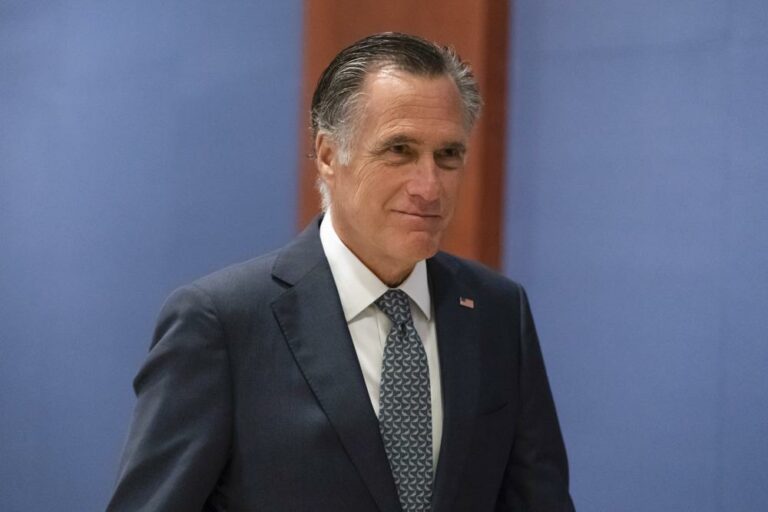Lawmakers moved to the brink Thursday of shaking hands on a scaled-back bipartisan compromise providing a fresh $10 billion to combat COVID-19, a deal that could set up final congressional approval next week.
The price tag was down from an earlier $15.6 billion agreement between the two parties that collapsed weeks ago after House Democrats rejected cutting unused pandemic aid to states to help pay for it. President Joe Biden requested $22.5 billion in early March. With leaders hoping to move the package through Congress quickly, the lowered cost seemed to reflect both parties’ calculations that agreeing soon to additional savings would be too hard.
The effort, which would finance steps like vaccines, treatments and tests, comes as Biden and other Democrats have warned the government is running out of money to counter the pandemic. At the same time, the more transmissible omicron variant BA.2 has been spreading quickly in the U.S. and abroad.
“We’ve reached an agreement in principle on all the spending and all of the offsets,” Sen. Mitt Romney of Utah, the lead Republican bargainer, told reporters, using Washington-speak for savings. “It’s entirely balanced by offsets.”
Senate Majority Leader Chuck Schumer, D-N.Y., and others were more circumspect.
“We are getting close to a final agreement that would garner bipartisan support,” Schumer said on the Senate floor. He said lawmakers were still finalizing the bill’s components and language, and awaiting a cost estimate from the nonpartisan Congressional Budget Office.
Sen. Patty Murray, D-Wash., chair of the Senate health committee and another bargainer, said, “I’m hoping,” when asked about Romney’s assessment.
Once clinched, an agreement would represent a semblance of bipartisan cooperation in battling the pandemic that dissolved a year ago, when a far larger, $1.9 trillion measure proposed by the new president cleared Congress with only Democratic votes. That bill was laden with spending to help struggling families, businesses and communities, while this one would be aimed exclusively at public health.
Many Republicans have been willing to go along with the new expenditures but have insisted on paying for them with unspent funds from previous bills Congress has enacted to address the pandemic.
Half the new measure’s $10 billion would be used for treatments, said Sen. Roy Blunt, R-Mo., who has helped negotiate the agreement. He said top federal health officials would be given wide discretion on spending the rest of it but it would include research and other steps for battling the disease, which has killed around 975,000 Americans and millions across the world.
Romney and others said savings the two parties had agreed to for the new bill would not include the cuts in state assistance that House Democrats opposed. He said some unused funds would be culled from another pandemic program that gives state and local governments funds for grants to local businesses.
Blunt said both sides had also agreed to savings that include pulling back an unspent $2.2 billion for aiding entertainment venues closed during the pandemic and more than $2 billion still available for assisting aviation manufacturing.
Romney said the $10 billion might include $1 billion for vaccines, treatments and other support for countries overseas. Blunt said that figure seemed unresolved. One third of the earlier, $15.6 billion measure had been slated to go abroad.
The lowered figure for assisting other countries encountered opposition in the House, where some Democrats wanted to boost the figure. Epidemiologists have cited the need to vaccinate more people around the world and reduce the virus’ opportunities for spinning off new variants.
“It’s a problem,” House Speaker Nancy Pelosi, D-Calif., told reporters. “It’s a shame.”
Kate Bedingfield, White House communications director, said officials were “very hopeful” an agreement would be reached and prodded lawmakers to include funds to help other countries cope with the disease.
“We’re not going to be able to put this pandemic behind us until we stop the spread and proliferation of new variants globally,” Bedingfield said.
Leaders hope Congress can approve the legislation before lawmakers leave for a spring recess after next week.
Republicans have leverage in the Democratic-controlled, 50-50 Senate because 60 votes are needed to pass most major bills. Romney and Blunt both said they believed a finalized package they described would attract significantly more than the 10 GOP votes needed.
Since the pandemic began, Congress has approved more than $5 trillion to address the economic and health crises it produced. Only a small fraction of that has been for public health programs like vaccines.
In an interview earlier Thursday with Punchbowl News, Senate Republican Leader Mitch McConnell, R-Ky., said the measure’s price tag seemed to have fallen to $10 billion because Democrats weren’t agreeing to additional savings.
Minutes later, Schumer took to the Senate floor and mentioned no figures but suggested its size could fall.
“I’m pleading with my Republican colleagues, join us,” Schumer said. “We want more than you do, but we have to get something done. We have to get something done.”
Asked if he thought an agreement could be reached before lawmakers’ recess, McConnell said, “We’ll see. Hope so.”
(AP)












One Response
Why? The economy is already at full employment meaning if more workers are needed it will have to come from getting retired workers to return, coercing homemakers to put the kids in day care and work outside the home, or from immigration (and admittedly, there are plenty of people lined up at the Mexican border and lining up in Europe). There is no need to “stimulate” the economy and any such stimulus will be highly inflationary unless coupled with tax increases. And for those who haven’t heard, World War III may be breaking but not as a quick 30 minute blast (relatively painless unless you survive), but as a prolonged piece-meal conflict involving having to spend lots of money on weapons and diverting large number of workers into the military or defense industries (in spite of the country have full employment).